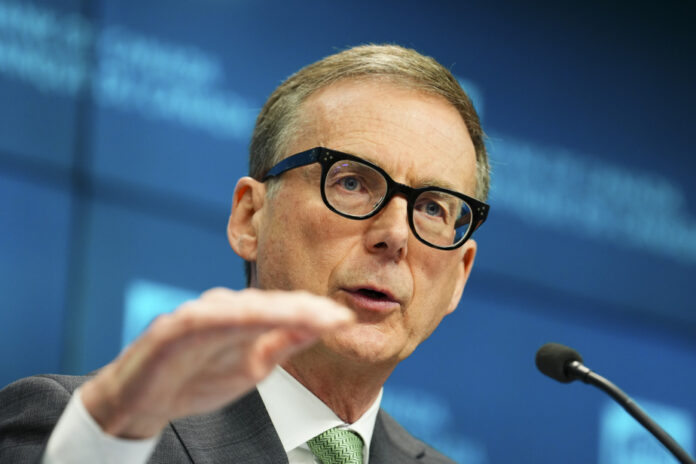Federal civil servants and many other employees are currently negotiating the renewal of their working conditions in order to maintain their purchasing power. Be careful, says the governor of the Bank of Canada, do not expect inflation to remain at such a high level.
Inflation is slowing and will continue to slow, said Tiff Macklem at a press conference, after announcing the bank’s decision to maintain its key rate at 4.5%.
“It’s not up to us to tell employers how to pay their employees, but it’s our job to reduce inflation,” the governor argued.
Two of the main unions in the federal public service recently obtained strike mandates to negotiate an improvement in their salary conditions, in a context of still high inflation.
Wage increases, which currently stand at a rate of 4% to 5%, are a major concern for the central bank, which judges that such increases are incompatible with the return of inflation to the 2% target.
Inflation, at 5.2% in February, is still too high, but price increases are slowing and will continue to slow, assured Tiff Macklem.
Returning to the 2% target “will take some time”, he stressed, however, making it clear that the central bank would not hesitate to raise its key rate again “if necessary”.
The bank’s board is currently debating whether it has done enough and whether it needs to keep rates at current levels longer to keep inflation in check.
“Several things still need to happen if we are to be successful in getting inflation back on target,” the governor warned.
Wage moderation, less tightness in the labor market and a slowdown in price increases passed on to consumers by companies are among the changes expected by the central bank.
“If the labor market remains tight and companies believe they can continue to pass cost increases on to their customers without restraint because consumers expect price increases, then it will be more difficult to bring back the ‘target inflation,’ insisted Tiff Macklem.
In its Monetary Policy Report published at the same time as the announcement of the key rate, the Bank of Canada must have noted that the Canadian economy was doing much better than it had expected at the start of the year. It corrects the situation for the first quarter, when growth should be 2.3% rather than 0.5%, as it forecast at the start of the year. It expects growth to weaken and remain weak for the rest of the year, which is desirable, according to monetary authorities.
The Bank of Canada is not ruling out the possibility of a recession, but if there is a recession, according to its governor, it will not be of the magnitude that people generally associate with it.
If the Canadian economy is holding up well against inflation and interest rate hikes, it is largely due to the increase in population, notes the Bank of Canada. The increase in the number of workers helps to reduce the tension on the labor market, but it also increases the demand for goods and services.
“The newcomers are also consumers who increase demand,” explained the governor.
Between October and December 2022, Canada’s population grew by nearly 300,000 people, the largest increase since 1956.
Financial assistance from the governments of Ottawa and the provinces also helps support household spending and economic growth, notes the Bank of Canada, without passing judgment on the need for this support.
In total, recent federal and provincial budgets total $25 billion in additional government spending to support households, notes the Monetary Policy Report. The provinces are the most generous. “Public spending, especially by the provinces, will contribute steadily to GDP growth,” the bank said.
“Tax cuts in some provinces will increase disposable income over the [three-year] projection period,” she predicts. In Quebec, for example, the reduction in the tax rate of the two lowest taxable income brackets will give back approximately $1.7 billion per year to households starting in 2023,” she illustrates.
Interest rates aren’t going to come down anytime soon, says Desjardins economist Randall Bartlett, who says the Bank of Canada’s governing council has become “more intransigent” in its fight against inflation.
The central bank is expecting a slowdown in wage increases and lower inflation expectations, which is far from certain, notes Sébastien Lavoie, chief economist at Laurentian Bank. Financial markets, which expect a rate cut by the end of the year, may be disappointed.
According to Royal Bank senior economist Josh Nye, the Bank of Canada will keep its key rate at 4.5% this year. “We think his next move will probably be a rate cut early next year,” he said. But if economic activity doesn’t slow down in the coming quarters, there’s a chance for rates to pick up.”















